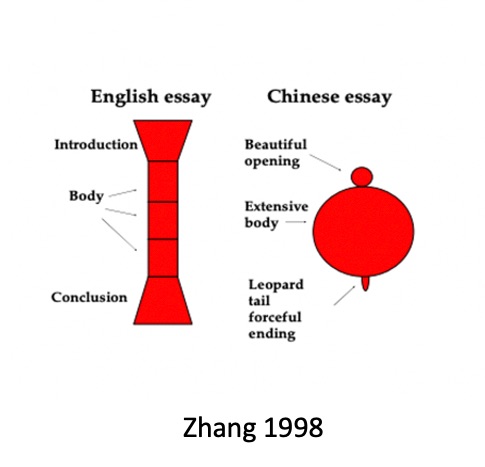
Frontispiece from Ned Ward’s Vulgus Brittanicus (1710)
Modern science is not exclusively western in its origins nor in contemporary practice. There are often marked differences in intellectual style between China and the west reflected in English academic writing by Chinese scholars, and this is particularly true in the social sciences.
For better or worse, English is the dominant language of science and academic publication. The task then for non-western writers is to learn how to use the anglophone style and ensure that the clarity and credibility of a publication rests solely on the quality of ideas rather than their presentation.
So, what expectations are there for academic writing in English, especially as compared to Chinese?
- Structure: an English article will usually begin with a top-down summary, provide the main ideas in some form of context as part of the introduction and give early indications of the central conclusions. Only after laying out the main claims will it then proceed to engage with scholarly and research evidence in support of them. Similarly, paragraphs consist of topic sentences expressing the main idea, followed by supporting and concluding sentences. Care is also taken to ensure logical connections between paragraphs.

- The ‘critical’ approach: the western style of argumentation responds to the work of others by marshalling various perspectives found in scholarly literature and putting forward a unique argument based on this evidence. Central claims and theses in an article are often not the dominant viewpoints, but perhaps represent neglected perspectives that require evidentiary support to convince the reader. Contradictory voices are recognised and cited, even if only to strengthen arguments against them. Terms are very well-defined or else questioned as to their validity in order to arrive at a more precise definition.
- Using and citing the work of others: unless an idea is widely known or accepted, references and citations are always used when taking an idea from someone else’s work; a page number, if paraphrasing, or else a direct quote may also be included. It is not considered acceptable to use someone else’s exact words without quotation marks and a citation. The nature of the dialogue between the article author and the works cited is thereby made very clear in western texts, respecting other scholars as individuals and showing the genealogy of ideas.
We leave discussion of Chinese intellectual style for another post, but hopefully Chinese readers will be able to appreciate some of the differences and use these ideas to think about writing in English for academic purposes.
To book for our next academic writing online seminar, contact us
References:
Kaplan, R. B. (1972). ‘Cultural thought patterns in inter-cultural education’. In K. Croft, (Ed.), Readings on English as a second language. (pp. 245-262). Cambridge, MA: Winthrop.
Kavan, H. & Wilkinson L. (2004). Dialoguing with dragons. Assisting Chinese students’ academic achievement. Proceedings of the Association of Tertiary Learning Advisors Aotearoa New Zealand 2003 conference. Hamilton: Waikato University, 119-131.
Zhang, Y. (1998). Projections of self in English as a foreign language argumentative texts written by college students: A thesis proposal. The Weaver: A forum for new ideas in education (2).
